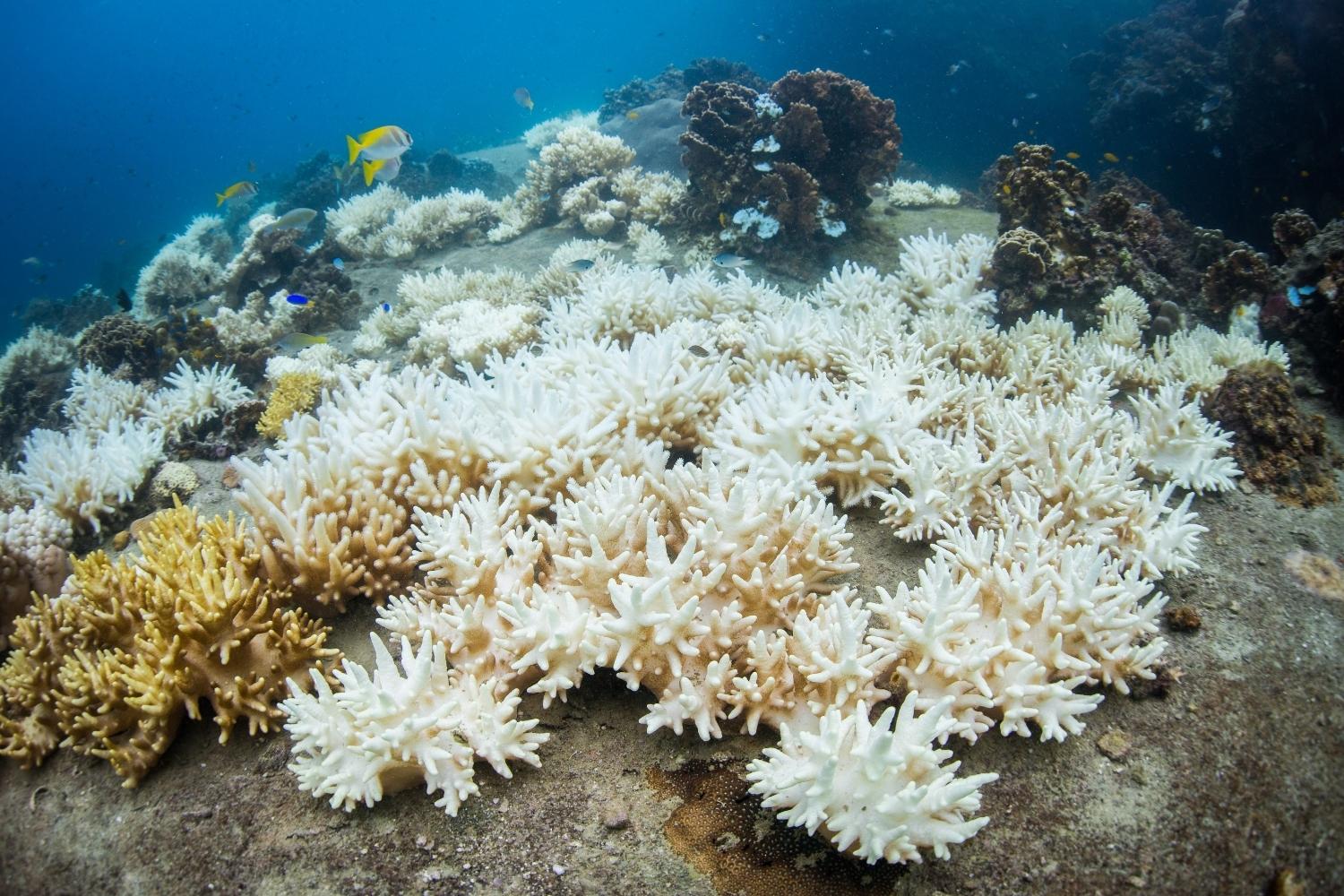
Coral reef bleaching is a serious issue affecting our oceans. When corals get stressed by changes like warmer water temperatures, they expel the algae living in their tissues, causing them to turn white. This not only makes the reefs look lifeless but also threatens the marine life that depends on them. Why does this matter? Healthy coral reefs support a quarter of all marine species, protect coastlines from erosion, and provide food and income for millions of people. Understanding the causes and consequences of coral reef bleaching can help us take steps to protect these vital ecosystems.
What is Coral Reef Bleaching?
Coral reef bleaching is a phenomenon where corals lose their vibrant colors and turn white. This happens when corals expel the algae (zooxanthellae) living in their tissues, usually due to stress factors like changes in temperature, light, or nutrients.
- Coral reefs get their color from tiny algae called zooxanthellae living inside their tissues.
- When stressed, corals expel these algae, causing the coral to turn white, a process known as bleaching.
- Bleaching doesn't mean the coral is dead, but it is under significant stress and more susceptible to mortality.
Causes of Coral Reef Bleaching
Several factors contribute to coral reef bleaching. Understanding these causes can help in efforts to protect and preserve these vital ecosystems.
- Elevated sea temperatures are the primary cause of coral bleaching.
- Pollution from agricultural runoff, sewage, and oil spills can stress corals and lead to bleaching.
- Overexposure to sunlight, especially during low tides, can cause bleaching.
- Ocean acidification, resulting from increased CO2 levels, reduces the availability of calcium carbonate needed for coral growth.
- Sedimentation from coastal development can smother corals and block sunlight, leading to bleaching.
- Pathogens and diseases can also cause corals to bleach.
Effects of Coral Reef Bleaching
Bleaching has far-reaching impacts on marine life and human communities. The loss of coral reefs affects biodiversity, fisheries, and coastal protection.
- Bleached corals have reduced growth rates and reproductive success.
- Coral reefs provide habitat for about 25% of all marine species.
- Bleaching can lead to the collapse of reef ecosystems, affecting fish populations and other marine life.
- Healthy coral reefs protect coastlines from storms and erosion.
- Coral reefs support fishing industries and provide food for millions of people.
- Bleached reefs can lose their appeal to tourists, impacting local economies.
Global Warming and Coral Bleaching
Climate change is a significant driver of coral reef bleaching. Rising global temperatures and changing ocean conditions pose a severe threat to coral reefs worldwide.
- The frequency and severity of coral bleaching events have increased over the past few decades.
- The Great Barrier Reef has experienced multiple mass bleaching events since 1998.
- Some scientists predict that if current trends continue, most of the world's coral reefs could be gone by 2050.
- Coral reefs are considered one of the most vulnerable ecosystems to climate change.
- Efforts to reduce greenhouse gas emissions are crucial for the survival of coral reefs.
Efforts to Combat Coral Reef Bleaching
Various initiatives and strategies are being implemented to mitigate the effects of coral reef bleaching and promote reef resilience.
- Marine protected areas (MPAs) help reduce local stressors on coral reefs.
- Coral restoration projects involve growing corals in nurseries and transplanting them to damaged reefs.
- Reducing pollution and improving water quality can help corals recover from bleaching events.
- Sustainable fishing practices can prevent overfishing and protect reef ecosystems.
- Public awareness campaigns educate people about the importance of coral reefs and the threats they face.
- Scientists are researching heat-resistant coral species that may be more resilient to climate change.
Interesting Facts About Coral Reefs
Coral reefs are fascinating and complex ecosystems. Here are some intriguing facts about these underwater marvels.
- Coral reefs cover less than 1% of the ocean floor but support about 25% of all marine species.
- The Great Barrier Reef is the largest coral reef system in the world, stretching over 2,300 kilometers.
- Some coral reefs are over 5,000 years old.
- Corals are animals, not plants, and belong to the same group as jellyfish and sea anemones.
- Coral reefs can produce natural compounds used in medicine, including treatments for cancer and HIV.
- The vibrant colors of coral reefs come from the symbiotic relationship between corals and zooxanthellae algae.
- Nighttime on a coral reef reveals a different world, with many species becoming active and bioluminescent organisms lighting up the water.
The Final Splash
Coral reef bleaching is a serious issue affecting our oceans. Rising sea temperatures, pollution, and overfishing all contribute to this problem. Healthy reefs support marine life, protect coastlines, and provide resources for millions of people. When reefs bleach, they lose their vibrant colors and ability to sustain life.
We can help by reducing our carbon footprint, supporting sustainable fishing practices, and advocating for stronger environmental protections. Small actions like using reef-safe sunscreen and reducing plastic use make a big difference.
Understanding the causes and effects of coral reef bleaching is the first step toward making positive changes. By spreading awareness and taking action, we can work together to protect these vital ecosystems for future generations. Let's do our part to ensure coral reefs continue to thrive and support the incredible diversity of life they harbor.
Was this page helpful?
Our commitment to delivering trustworthy and engaging content is at the heart of what we do. Each fact on our site is contributed by real users like you, bringing a wealth of diverse insights and information. To ensure the highest standards of accuracy and reliability, our dedicated editors meticulously review each submission. This process guarantees that the facts we share are not only fascinating but also credible. Trust in our commitment to quality and authenticity as you explore and learn with us.
